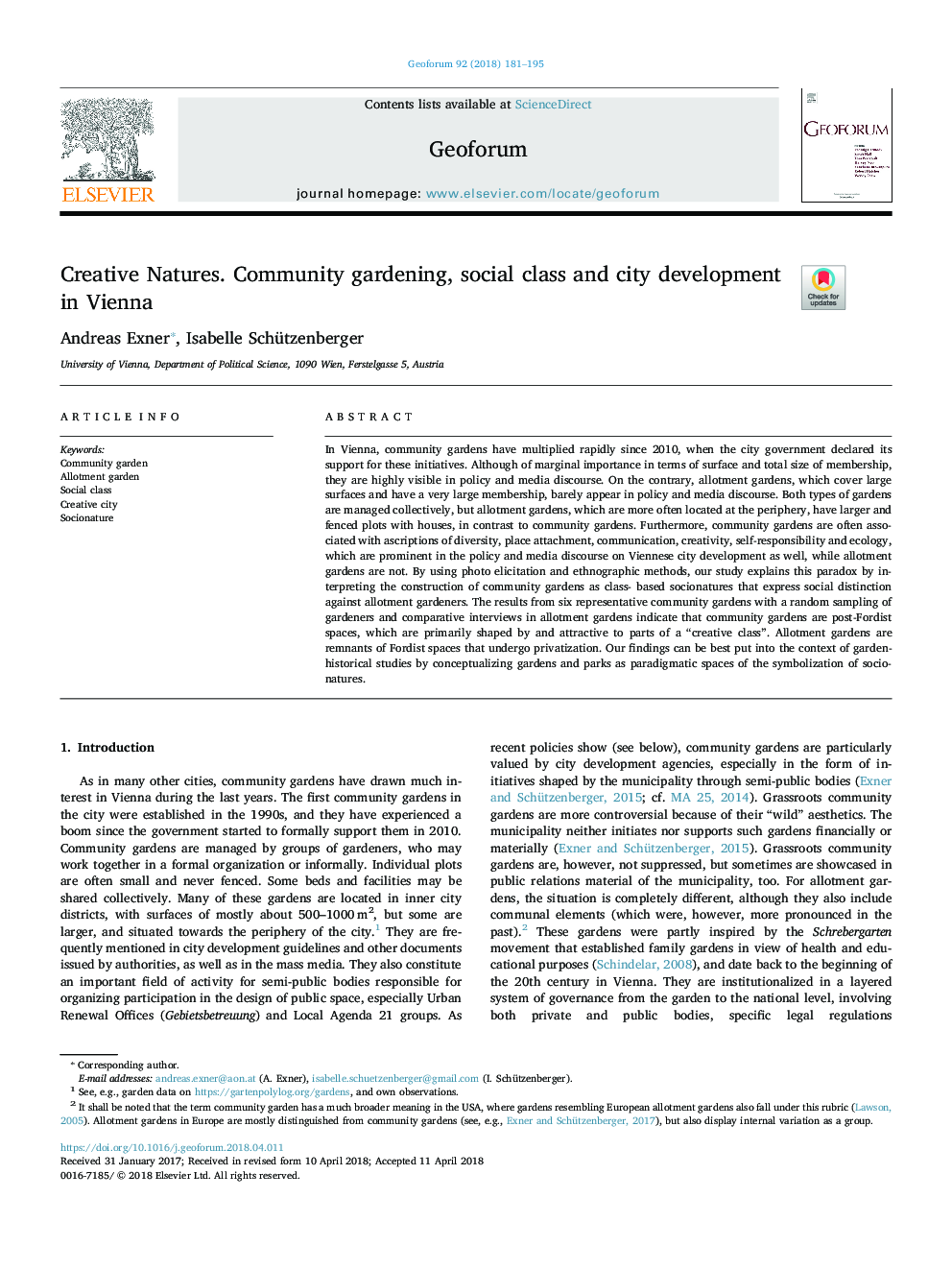| Article ID | Journal | Published Year | Pages | File Type |
|---|---|---|---|---|
| 7353620 | Geoforum | 2018 | 15 Pages |
Abstract
In Vienna, community gardens have multiplied rapidly since 2010, when the city government declared its support for these initiatives. Although of marginal importance in terms of surface and total size of membership, they are highly visible in policy and media discourse. On the contrary, allotment gardens, which cover large surfaces and have a very large membership, barely appear in policy and media discourse. Both types of gardens are managed collectively, but allotment gardens, which are more often located at the periphery, have larger and fenced plots with houses, in contrast to community gardens. Furthermore, community gardens are often associated with ascriptions of diversity, place attachment, communication, creativity, self-responsibility and ecology, which are prominent in the policy and media discourse on Viennese city development as well, while allotment gardens are not. By using photo elicitation and ethnographic methods, our study explains this paradox by interpreting the construction of community gardens as class- based socionatures that express social distinction against allotment gardeners. The results from six representative community gardens with a random sampling of gardeners and comparative interviews in allotment gardens indicate that community gardens are post-Fordist spaces, which are primarily shaped by and attractive to parts of a “creative class”. Allotment gardens are remnants of Fordist spaces that undergo privatization. Our findings can be best put into the context of garden- historical studies by conceptualizing gardens and parks as paradigmatic spaces of the symbolization of socionatures.
Keywords
Related Topics
Social Sciences and Humanities
Economics, Econometrics and Finance
Economics and Econometrics
Authors
Andreas Exner, Isabelle Schützenberger,
